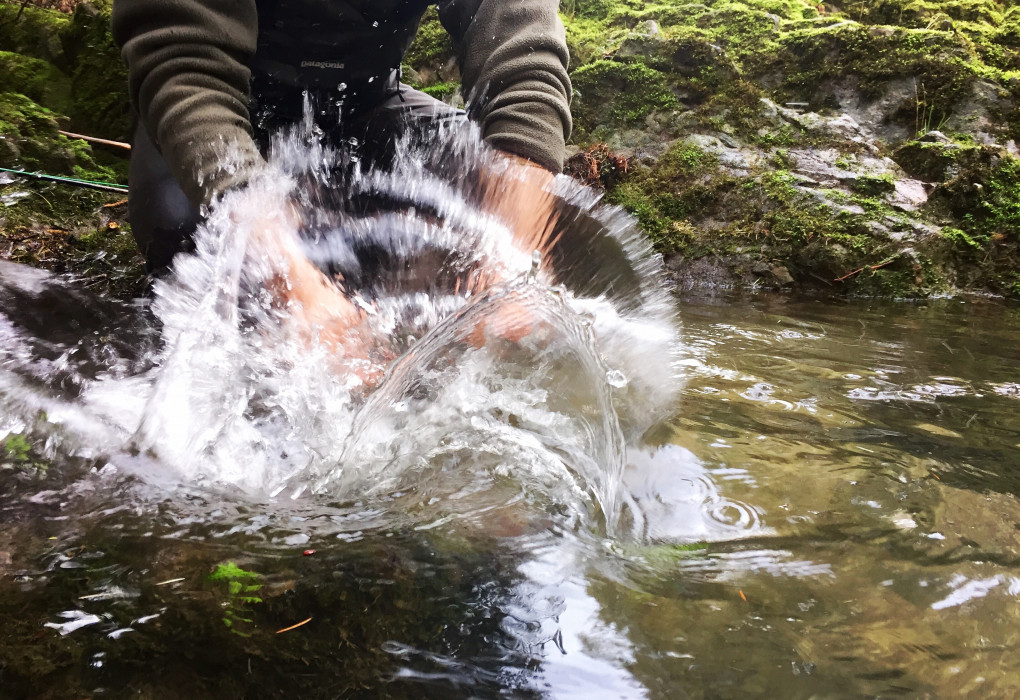Questions from the Community - Can You Propose a 1 Wild Winter Steelhead Annual Bag Limit for Southwest Oregon?
Questions from Our Community
Q: Can we propose a regulation change for a bag limit of 1 wild winter steelhead per year?
Native Fish Society ensures fisheries contribute to the long term health of naturally regenerating fish populations. We promote healthy fisheries, reform harmful fisheries, and organize fisheries to protect the most vulnerable species encountered from harm. We recognize the value of both consumptive and non-consumptive fisheries, and we promote respectful fishing by all user groups. We define respectful fisheries as those tailored to the biological needs of the individual fish and the health or biological status of the entire run. We believe in wild fish for all - for people, the ecosystem, and for the fish themselves. With that as a foundation for how NFS approaches harvest, let me answer your question about the 1 fish per day 1 fish per year proposal for wild winter steelhead in the southwest zone of Oregon.
We believe that overharvest (in this case set by Oregon Department of Fish and Wildlife and biological research as a harvest of more than 10% of the river’s wild winter steelhead run) is a negative thing for fish and for all anglers, both consumptive and non-consumptive. Overharvest removes the genetic diversity, abundance, productivity, and spatial distribution from a population making them more susceptible to other stressors that are out fish and wildlife’s control like ocean conditions, drought, flood, and fire. Take a population already weakened by overharvest and throw in a couple of additional stressors and history has demonstrated time and again total fishery closures and petitions to protect declining species under the Endangered Species Act are soon to follow. Our goal is to avoid a crisis and ensure that fisheries contribute to the long term health of naturally regenerating fish populations.
Let’s get to the specifics, currently, harvest data for wild winter steelhead is limited coming only from the harvest cards that are voluntarily returned (less than 20% of cards). Nevertheless, this is the best data available and it gives us a reasonable base estimate of harvest in the fishery (it does not include catch and release mortality or any estimate for illegal or unreported harvest). The other thing we learned from the catch card data is that 90% of anglers were not keeping more than 2 wild winter steelhead per year. As a result, the 2018 Commission action reducing the annual bag limit from 5 fish to 3 fish was symbolic of a Commission wanting to reduce risk from overharvest, but in reality, this action did little to reduce risk to the fish from overharvest since most anglers take 2 fish or less. Your proposal of one fish per year would be a significant reduction from the current annual bag limit of 3 fish in that it would likely reduce harvest more or less by half. However, it may not be enough to get harvest within ODFW’s “no more than 10% of the population” parameter, which governs the Sixes and Coquille river wild winter steelhead fisheries and can be applied as a best practice to the other southern Oregon wild winter steelhead harvest fisheries that currently operate without a Conservation and Management Plan.
Let’s consider harvest on the Sixes to illustrate why 1 fish per person per year may not be sufficient. I’m using the Sixes because it does not have a direct hatchery plant, so it’s more likely that all fish reported from harvest were wild. Last year’s harvest cards indicate that 380 winter steelhead were harvested in the Sixes River. An estimate of the total run size in the Sixes is limited due to a lack of watershed specific adult spawner surveys, but an Oregon Department of Fish and Wildlife report estimated a 5-year average for wild winter steelhead in the Sixes River at 1,000 fish. We’d love to have better information, but as it stands this is the best we’ve found and what the state has made available. If you do the math with these estimates of total run size and estimated harvest, 38% of the run was harvested in 2018 - almost 4x the 10% harvest cap set by fish and wildlife. A one fish bag limit would likely reduce harvest by 50%, so for 2018 from 380 to ~190 fish. However, even with the reduced bag limit, a similar number of anglers would still harvest double the number of wild winter steelhead allowed under ODFW’s 10% harvest cap, which is no more than 100 fish for Sixes River. In fact, according to the data in 12 of the past 15 years more than 100 wild winter steelhead were harvested in the Sixes River.
Our central concern with the wild winter steelhead fishery on Oregon’s south coast is not that we’re killing wild steelhead (even in the proposed catch and release fishery 5-10% of steelhead caught and released will die), but that we’re killing way too many of these fish. Harvesting too many fish is bad for the fish and its bad for all anglers in the long term, as over-harvested fish populations are less resilient to other stressors like poor ocean conditions. When these factors combine it’s how we get longterm declines in fisheries, fishery closures, and the need for protection under the Endangered Species Act.
To further complicate the situation the state doesn’t have the basic monitoring, enforcement, or regulatory tools in place to responsibly manage the increased fishing pressure when every angler that wants to go fishing is legally eligible for 1 fish per day and 3 per year. This is why we’re advocating for catch and release until a management plan is put in place to ensure the wild winter steelhead are not overharvested.
Native Fish Society staff and volunteers will engage in the South Coast Multi-Species Management planning process next year and work with the Department to set and ensure escapement goals are met, manage consumptive harvest rates, and ensure catch and release mortality is not negatively impacting population-level health. However, the burden of proof is on the Department to show how they will structure, monitor, and enforce the fishery to ensure the health and resilience in the wild steelhead population.
With southwest Oregon’s remarkable, free-flowing rivers it should be a regional stronghold for wild winter steelhead. However, to make a longterm and resilient wild steelhead fishery a reality we have to make sure we’re engaging in a fishery that respects the biological needs of the individual fish and the population as a whole. Thank you for your question @saltwalter. I hope that better illustrates why we support catch and release for wild winter steelhead.

